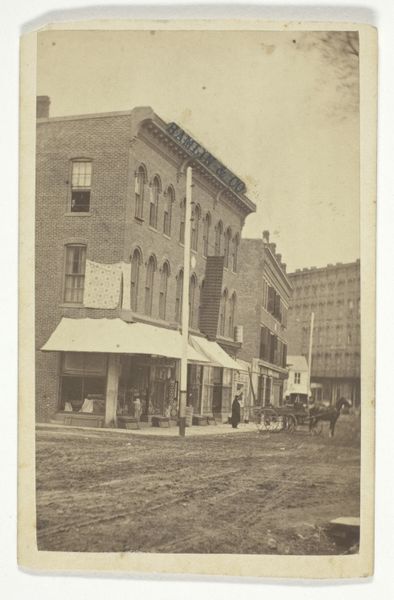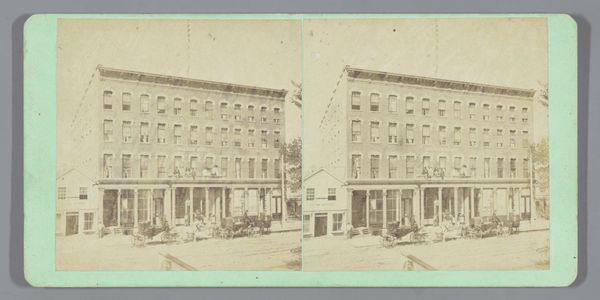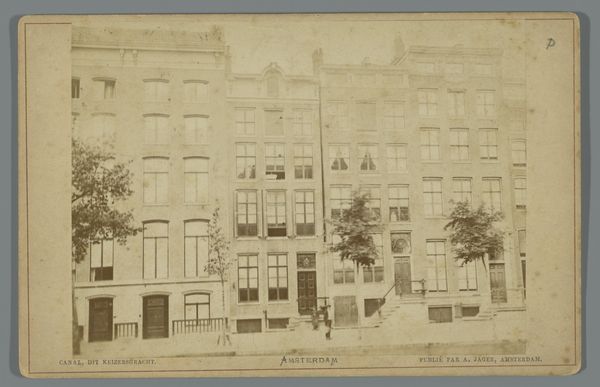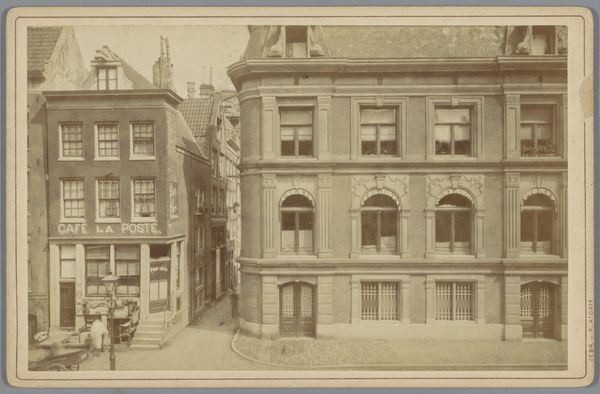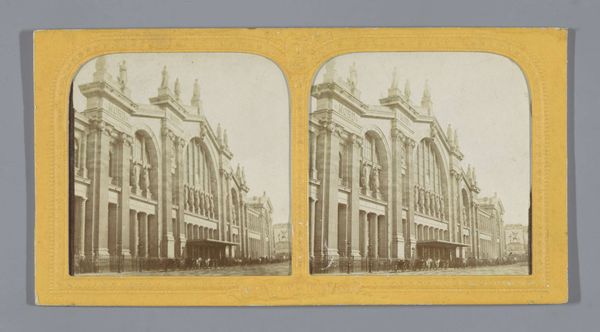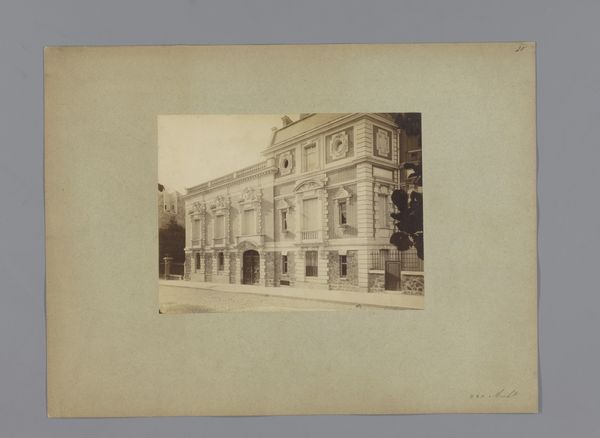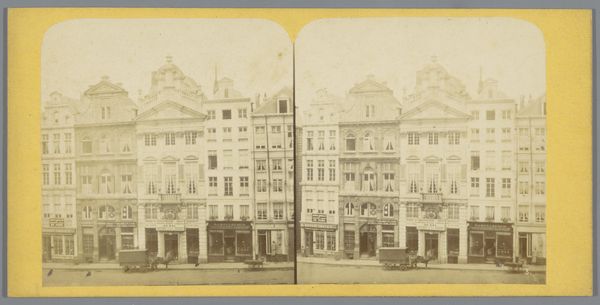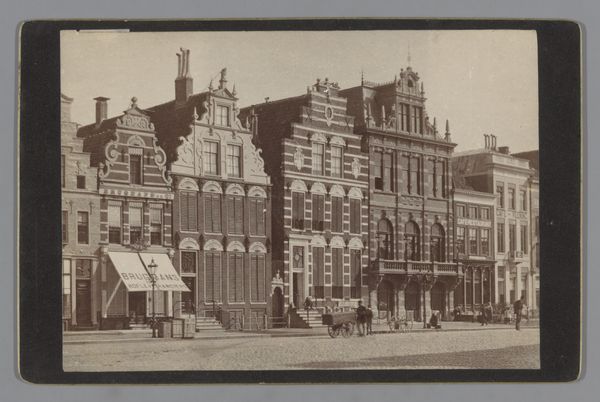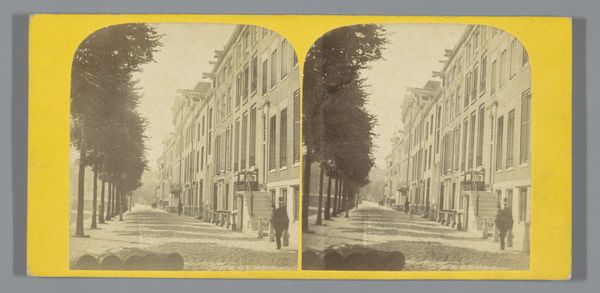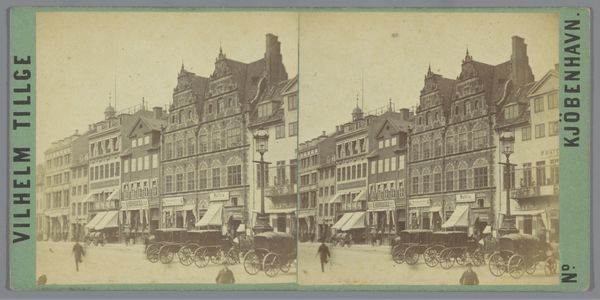![[Washington Street, Boston] by James Wallace Black](/_next/image?url=https%3A%2F%2Fd2w8kbdekdi1gv.cloudfront.net%2FeyJidWNrZXQiOiAiYXJ0ZXJhLWltYWdlcy1idWNrZXQiLCAia2V5IjogImFydHdvcmtzLzAwZTRmMmU1LTc2OGEtNGI2Ni05ZDUxLWRjMmFjMjJmMzFhNy8wMGU0ZjJlNS03NjhhLTRiNjYtOWQ1MS1kYzJhYzIyZjMxYTdfZnVsbC5qcGciLCAiZWRpdHMiOiB7InJlc2l6ZSI6IHsid2lkdGgiOiAxOTIwLCAiaGVpZ2h0IjogMTkyMCwgImZpdCI6ICJpbnNpZGUifX19&w=3840&q=75)
daguerreotype, photography, albumen-print
#
daguerreotype
#
street-photography
#
photography
#
cityscape
#
albumen-print
#
realism
#
building
Dimensions: Image: 18 × 15.5 cm (7 1/16 × 6 1/8 in.), dome top
Copyright: Public Domain
Editor: This is "[Washington Street, Boston]," taken between 1855 and 1865 by James Wallace Black. It's a daguerreotype, now at the Met. What strikes me is how strangely empty the street feels, despite all the signs of commerce and activity. What do you see in it? Curator: I see a cultural memory, a visual encoding of 19th-century aspirations and anxieties. Look at the buildings – each striving to project permanence and success. The repetition of architectural motifs – arches, windows – speak to a yearning for order and stability amidst rapid change. Editor: So, you see the buildings as symbols of stability? Curator: Precisely. The very act of photographing, capturing a specific moment on a silver plate, attempts to arrest the fleeting nature of time. But consider the imperfections, the blurred figures – these also reveal a truth about the period. Editor: A truth about impermanence? Curator: Yes, and perhaps the psychological weight of industrialization and urbanization. What stories do those storefront signs tell us? "Books," "Stationers," "Lithographer"—these aren't merely businesses; they're purveyors of knowledge and communication, of shaping public opinion. What sort of anxieties did this inspire? Editor: I see your point; the buildings’ symbols reflect a desire to control time and knowledge during a period of flux. Thanks! Curator: And, by extension, influence cultural narratives. Considering all these visual layers definitely shifted my perception of what seems at first just a cityscape.
Comments
No comments
Be the first to comment and join the conversation on the ultimate creative platform.
